Scrivener is a very useful tool for
writing, organising and and revising text. It allows for hierarchy and
structure without forcing the user into only one method of creating
that. In addition to the Outliner View, which gives the user a method of
analysing their documents in a comprehensive manner, the Binder also
acts as a form of “Outliner List” that you might be used to seeing in
programs like word (though Scrivener’s Binder does more). That is, you
can clearly see the different documents by their title, and how they
organised in relation to folders/groups, and other documents. You can
move and manipulate them as you need. There are other ways of organising
concepts though, using Mind Maps, and these can be used in various ways
with Scrivener.
Mind Maps were popularised by Tony Buzan and it’s easy enough to draw them manually instead of using a computer program or app. A typical use for a mind map might exploring an idea on the spur of the moment, making connections between similar or related ideas, and brainstorming new ones. You could just create a number of blank documents are in Scrivener and rearrange them in the Binder to reflect the structure, but what if you’re not using Scrivener at the time? There are many apps for iPhone, iPad, and Android phones available which use OPML to store data, and a number of those are either mind mappers, or outliners. Either way it means you can play with an idea on the run, and then the import an OPML file from that app into Scrivener when you get to back your desktop.
Mind Maps are good visualisation tools but are not designed for great chunks of text. Instead titles and topics are used to represent ideas, things and even people. It’s all about structure and the relationships between items in the map. The following diagram shows part of a typical mind map, This one’s about CLUEDO (also known as CLUE in the USA) and made using SimpleMind:
As you can see it has a central concept, and then branches into several main topics, with a variety of sub topics and notes. These are called nodes and some nodes are connected by a curvy arrowed line indicating that they’re related somehow. A typical mind mapping program will allow you edit almost everything on the map on the fly by using a mouse or other method. You should be able to add, move and delete nodes, name and rename them, add notes (formatted text associated with the node) and other formatting to them. Also ideally a mind mapprogram will also allow you to import information to create the map, and export it later in a variety of formats.
Importing Images
The simplest way of getting a Mind Map into Scrivener is making an image of it and importing/copying that like any other image. This can be done using EDIT > INSERT > IMAGE FROM FILE (or equivalent keyboard shortcut) within the Editor. You can use FILE > IMPORT > FILES to add the image to the binder directly. Most mind map programs have the ability to save/export an image based on the map (size will vary). If it doesn’t you should be able to zoom in and out and take a screen shot using an appropriate utility, and then save/edit/import that. And that might be all you need, a visual reminder of a set of ideas. You may not need to import any more detail than that.
In addition to mindmappers, you can also using diagramming and drawing programs like Dia, yEd, GIMP, eDraw, Visio, and others to draw diagrams and charts. Using a general drawing program like GIMP or Photoshop can be awkward however because the manner in which graphic elements are stored. Move one item on the screen and you don’t necessarily move related items like lines and nodes, because each is made from one or more layers. Even if you group these they still have to be moved manually. Programs like Dia, yEd Graph Editor and Visio however allow for “snapping” lines onto nodes, so that if you move a node that end of the line moves with it. Each of these though has a learning curve, so be prepared to learn how to use them first. The following is a graph created in yEd for a simple action adventure idea, and saved as an image file:
Graphs might be handy for any number of ideas: However, if you do want to import a mind map or outline into Scrivener as a series of structured documents, you have two choices: .mm and .opml formats.
.mm Format
The .mm format was used originally by the open-source mind map application called FreeMind, that runs under java so it can be used cross-platform.. The FreeMind format assumes/allows:
A number of other mind map programs will also load and save using .mm format, and many extend it by adding features such as summaries, and “floating topics” (those not connected to the central node). Often you can share most of the above between programs, but they are displayed and formatted differently depending on the program. Scrivener will only import from .mm files the nodes (which become documents), the relationships between nodes (reflected in the structure in the Binder), their titles (which carry over as the title of the new document), and any notes in that node. Everything else is lost. For example, the above mindmap imports as a set of documents like this:
This is essentially the same structure as seen in the previous image, only in the Binder rather than the Map. If we were to export this from Scrivener to .mm format we’d get this in FreeMind:
As you can see the structure and notes are there, but everything else is gone. Also, not how the filename used - FreePlane MM Export - has become the central node! While this may seem odd, it’s actually done by Scrivener and means you can export several groups of documents with no central document. Also the “untitled” node branch was actually the one with the Image inserted. The title for that was “faked” in FreeMind because the image overwrote the title, so an “extended node edit was used to fix that (nothing you need know unless you use FreeMind).
So what happens to the text in the notes when the mind map is imported? There were three nodes in the original mind map that had notes. One for Item f (which was hidden in the exported image because the parent node was collapsed) looked like this:
As you can see it was formatted in various ways. What you get all depends on which option you choose as you import the file. The Options are:
This format is mainly used to import from and export to Outlining Programs. OPML stands for “Outline Processor Markup Language” and is an XML file format for describing outlines. The OPML file format is supported by a number outlining packages, and also by some mind-mapping programs. Mac or Windows desktop applications that support OPML are less common than apps on smart phones that do, but they do include InfoCube, Notecase Pro, SimpleMind, and Aeon Timeline.
In any case exactly the same Import and Export options are used with this format. There are slight differences though in what you get. The following is the same structure as shown above in the .mm import, but this has first been imported by SimpleMind and then exported as a OPML file.
Certain missing titles are there, whereas they were listed as “untitled” in when imported using .mm format. There’s also an addition document at the top “FreeMind” which is the name of the original mind map, not the exported file name.. There may be other differences as well, especially if you’re using the Main Text (with Synopsis) option, but that will depend on the program or app that exported the file. Likewise, your mileage might vary when exporting from Scrivener as well. SimpleMind for example will import any notes from Scrivener, but as all notes in SimpleMind are plain text, the formatting gets lost.
Importing Aeon Timelines
Aeon Timeline is a useful program for creating and managing timelines. It can also be synced with Scrivener so that change sin one are reflected in another. This creates a number of documents in the Binder, one for each event in Aeon, with custom meta data fields related to when that even was and which entities (which can be people, places, objects, and even concepts) were there. This is a quick way of creating a series of events and keeping track of “who did what to whom where with what” and “who else saw it”. Aeon also exports to OPML format, and you can use that to create documents for each entity in Aeon. As an example, here’s a timeline based on the game Cluedo:
The timeline above show three events” “Mr X” being murdered by Miss Scarlett in the Conservatory with the Rope; Mrs Peacock (while in the Dining Room) accusing Reverend Green of doing it in the Conservator with the Dagger, while Miss Scarlet, Professor Plum and and Colonel Mustard observe the accusation; and finally Colonel Mustard correctly guesses the details of the murder while everyone’s in the Lounge. The Arcs in which the events occur are merely ways of grouping events. If we sync this timeline with Scrivener (see instructions for this on the Aeon site) we get the following:
Scrivener creates a new folder called Aeon Timeline Exported Events folder, and underneath that creates one document for each event. As you can see there’s a lot of data in the General Meta-Data sub-panel. Notice how the entities involved in the event are listed under Aeon Relationships. The Aeon Notes includes a comment I typed into Aeon directly. Now this great because you can search for Custom Meta Data in Scrivener, making it easy say, to find all the scenes in the Conservatory, and perhaps add those to a collection.
So what happens when we export an OPML file from Aeon? After selecting the export type (OPML) and giving it a file name, the following dialog box is displayed:
This allows you to select which types of information to export. The Order events by drop menu has two options, Arc & Date and Date Only. Note that what we’re exporting event based. After we import the resulting OPML (using the Synopsis option) we get something like this in the Binder:
…or…
The text in the Main Text (or Notes, or Synopsis if you choose those options) will match the options you chose when exporting from Aeon, but will look like this:
You can still search for that, but with different options than shown before. Depending on which part you selected when importing.
So why would you import an OPML file instead of syncing with an Aeon Timeline? Well, perhaps you don’t have a copy of Aeon and someone else sent you the OPML file of timeline they’ve created, perhaps as part of a collaboration. Or maybe you have Scrivener and Aeon, but for some reason on different computers (for whatever reason). Also note that while Aeon exports to OPML format, it doesn’t import it.
Importing Scapple
Scapple is made by the same people who make Scrivener. It is more of a brain storming program than a mind mapper. You can create notes and connect them by lines, but there are not arranged in any particular structure or hierarchy. Each note can be formatted and manipulated, and you can create background images to imply a grouping. Notes can also be “stacked” so that each appears underneath the previous one. The image below shows a Scapple layout:
You can drag selected notes directly from Scapple to Scrivener. For the following image I’ll do a Select All in Scapple first, then drag everything in the above Scapple document and drag them with the mouse to the Dragged (All) folder which I created in Scrivener first. The result is:
Firstly note the order in which the notes are copied to new documents - the top most document or shape is copied first, then the next note/shape to the right, and the next, until all notes/shapes are copied. Then the next note/shape down the page starting at the left and then to the right, and repeated until everything selected is copied. This is why note 3 is copied before 6, and 4 before SN1 and SN 2. A shape is copied to a folder/group, and any notes over that shape are in that folder. The first line of the note becomes the tittle of the the new document in the Binder. The full text of the dragged note (yes, including the first line) is copied to the Main Text area and the Synopsis. What happens if you only select some and drag. Below is the result of selecting only notes 7, 1, and SN 2:
No folder’s been created for 7. Also, SN 2, which is part of a set of stacked notes, doesn’t get copied! Lets try a different combination, of dragging all the notes over the shape, and the note at the top of the stack, in Scrivener:
No folder has been created. In fact, if we want to put the notes above the shape into a folder in Scrivener, we also have to select the shape - this is why the folder was created in the first example, because a Select All was done first in Scapple. Even though we only selected note 4 and not the other two stacked notes, because it was the top note in the stack, all the notes in the stack were imported. Now Scapple exports to OPML as well, though it doesn’t import anything (as yet). We’ll export the Scapple document as an OPML file and import it into Scrivener. The result looks like this:
The “untitled” mystery documents can be be figured out (perhaps) by checking the notes imported with them. It clearly seems better to drag Scapple documents into Scrivener than to import them! When exporting from Scapple you have an Export dialog box that looks like this:
Ticking the Selected Notes only box means that you’re only exporting what you’ve selected,. If you don’t select the Create ‘notes’ field, none of the text in the notes will be copied at all. While it might seem that exporting notes from Scapple to Scrivener (as distinct from dragging them) might be a backward step, clearly the OPML file can be used by other programs, perhaps a mind mapper or outliner on a phone. Once again your mileage will vary!
Applications & Links
Mind Maps were popularised by Tony Buzan and it’s easy enough to draw them manually instead of using a computer program or app. A typical use for a mind map might exploring an idea on the spur of the moment, making connections between similar or related ideas, and brainstorming new ones. You could just create a number of blank documents are in Scrivener and rearrange them in the Binder to reflect the structure, but what if you’re not using Scrivener at the time? There are many apps for iPhone, iPad, and Android phones available which use OPML to store data, and a number of those are either mind mappers, or outliners. Either way it means you can play with an idea on the run, and then the import an OPML file from that app into Scrivener when you get to back your desktop.
Mind Maps are good visualisation tools but are not designed for great chunks of text. Instead titles and topics are used to represent ideas, things and even people. It’s all about structure and the relationships between items in the map. The following diagram shows part of a typical mind map, This one’s about CLUEDO (also known as CLUE in the USA) and made using SimpleMind:
Cluedo Mind Map - Clueudo® HASBRO
As you can see it has a central concept, and then branches into several main topics, with a variety of sub topics and notes. These are called nodes and some nodes are connected by a curvy arrowed line indicating that they’re related somehow. A typical mind mapping program will allow you edit almost everything on the map on the fly by using a mouse or other method. You should be able to add, move and delete nodes, name and rename them, add notes (formatted text associated with the node) and other formatting to them. Also ideally a mind mapprogram will also allow you to import information to create the map, and export it later in a variety of formats.
Importing Images
The simplest way of getting a Mind Map into Scrivener is making an image of it and importing/copying that like any other image. This can be done using EDIT > INSERT > IMAGE FROM FILE (or equivalent keyboard shortcut) within the Editor. You can use FILE > IMPORT > FILES to add the image to the binder directly. Most mind map programs have the ability to save/export an image based on the map (size will vary). If it doesn’t you should be able to zoom in and out and take a screen shot using an appropriate utility, and then save/edit/import that. And that might be all you need, a visual reminder of a set of ideas. You may not need to import any more detail than that.
In addition to mindmappers, you can also using diagramming and drawing programs like Dia, yEd, GIMP, eDraw, Visio, and others to draw diagrams and charts. Using a general drawing program like GIMP or Photoshop can be awkward however because the manner in which graphic elements are stored. Move one item on the screen and you don’t necessarily move related items like lines and nodes, because each is made from one or more layers. Even if you group these they still have to be moved manually. Programs like Dia, yEd Graph Editor and Visio however allow for “snapping” lines onto nodes, so that if you move a node that end of the line moves with it. Each of these though has a learning curve, so be prepared to learn how to use them first. The following is a graph created in yEd for a simple action adventure idea, and saved as an image file:
Graphs might be handy for any number of ideas: However, if you do want to import a mind map or outline into Scrivener as a series of structured documents, you have two choices: .mm and .opml formats.
.mm Format
The .mm format was used originally by the open-source mind map application called FreeMind, that runs under java so it can be used cross-platform.. The FreeMind format assumes/allows:
- One central node from which all other nodes are linked to;
- Each node can have one parent node and any number of child nodes;
- Each note can have notes, containing text about that node;
- Allows for RTF formatting of node titles and note text;
- Images may be imported into nodes in the map;
- Nodes can have icons to decorate them;
Groups of nodes can be contained within a “cloud; - Individual nodes can be formatted as a “fork”
(with lines going through them) or with a “bubble” (like an Egyptian cartouche); - Two nodes can also be connected “graphic links” (also known as relationships in other programs); and
Clouds, text, links (known as “edges”) bubbles and graphic links can all be formatted in various ways.
A number of other mind map programs will also load and save using .mm format, and many extend it by adding features such as summaries, and “floating topics” (those not connected to the central node). Often you can share most of the above between programs, but they are displayed and formatted differently depending on the program. Scrivener will only import from .mm files the nodes (which become documents), the relationships between nodes (reflected in the structure in the Binder), their titles (which carry over as the title of the new document), and any notes in that node. Everything else is lost. For example, the above mindmap imports as a set of documents like this:
This is essentially the same structure as seen in the previous image, only in the Binder rather than the Map. If we were to export this from Scrivener to .mm format we’d get this in FreeMind:
As you can see the structure and notes are there, but everything else is gone. Also, not how the filename used - FreePlane MM Export - has become the central node! While this may seem odd, it’s actually done by Scrivener and means you can export several groups of documents with no central document. Also the “untitled” node branch was actually the one with the Image inserted. The title for that was “faked” in FreeMind because the image overwrote the title, so an “extended node edit was used to fix that (nothing you need know unless you use FreeMind).
So what happens to the text in the notes when the mind map is imported? There were three nodes in the original mind map that had notes. One for Item f (which was hidden in the exported image because the parent node was collapsed) looked like this:
As you can see it was formatted in various ways. What you get all depends on which option you choose as you import the file. The Options are:
- Synopsis
Notes are placed in Synopsis of document only; - Main Text (with Synopsis)The node notes are copied as plain text into the main text of the document, and also in the Synopsis;
- Notes (with Synopsis)
The node notes are copied as into the Document Notes of the document, and also in the Synopsis; - Titles onlyNo notes are imported.
- Titles Only
Only the title of each document is exported. - Titles with SynopsisSynopsis is used for exported notes;
- Titles and Text
Main Text is used for exported notes; - Titles and NotesDocument Notes are exported notes.
This format is mainly used to import from and export to Outlining Programs. OPML stands for “Outline Processor Markup Language” and is an XML file format for describing outlines. The OPML file format is supported by a number outlining packages, and also by some mind-mapping programs. Mac or Windows desktop applications that support OPML are less common than apps on smart phones that do, but they do include InfoCube, Notecase Pro, SimpleMind, and Aeon Timeline.
In any case exactly the same Import and Export options are used with this format. There are slight differences though in what you get. The following is the same structure as shown above in the .mm import, but this has first been imported by SimpleMind and then exported as a OPML file.
Certain missing titles are there, whereas they were listed as “untitled” in when imported using .mm format. There’s also an addition document at the top “FreeMind” which is the name of the original mind map, not the exported file name.. There may be other differences as well, especially if you’re using the Main Text (with Synopsis) option, but that will depend on the program or app that exported the file. Likewise, your mileage might vary when exporting from Scrivener as well. SimpleMind for example will import any notes from Scrivener, but as all notes in SimpleMind are plain text, the formatting gets lost.
Importing Aeon Timelines
Aeon Timeline is a useful program for creating and managing timelines. It can also be synced with Scrivener so that change sin one are reflected in another. This creates a number of documents in the Binder, one for each event in Aeon, with custom meta data fields related to when that even was and which entities (which can be people, places, objects, and even concepts) were there. This is a quick way of creating a series of events and keeping track of “who did what to whom where with what” and “who else saw it”. Aeon also exports to OPML format, and you can use that to create documents for each entity in Aeon. As an example, here’s a timeline based on the game Cluedo:
The timeline above show three events” “Mr X” being murdered by Miss Scarlett in the Conservatory with the Rope; Mrs Peacock (while in the Dining Room) accusing Reverend Green of doing it in the Conservator with the Dagger, while Miss Scarlet, Professor Plum and and Colonel Mustard observe the accusation; and finally Colonel Mustard correctly guesses the details of the murder while everyone’s in the Lounge. The Arcs in which the events occur are merely ways of grouping events. If we sync this timeline with Scrivener (see instructions for this on the Aeon site) we get the following:
Scrivener creates a new folder called Aeon Timeline Exported Events folder, and underneath that creates one document for each event. As you can see there’s a lot of data in the General Meta-Data sub-panel. Notice how the entities involved in the event are listed under Aeon Relationships. The Aeon Notes includes a comment I typed into Aeon directly. Now this great because you can search for Custom Meta Data in Scrivener, making it easy say, to find all the scenes in the Conservatory, and perhaps add those to a collection.
So what happens when we export an OPML file from Aeon? After selecting the export type (OPML) and giving it a file name, the following dialog box is displayed:
This allows you to select which types of information to export. The Order events by drop menu has two options, Arc & Date and Date Only. Note that what we’re exporting event based. After we import the resulting OPML (using the Synopsis option) we get something like this in the Binder:
…or…
The text in the Main Text (or Notes, or Synopsis if you choose those options) will match the options you chose when exporting from Aeon, but will look like this:
You can still search for that, but with different options than shown before. Depending on which part you selected when importing.
So why would you import an OPML file instead of syncing with an Aeon Timeline? Well, perhaps you don’t have a copy of Aeon and someone else sent you the OPML file of timeline they’ve created, perhaps as part of a collaboration. Or maybe you have Scrivener and Aeon, but for some reason on different computers (for whatever reason). Also note that while Aeon exports to OPML format, it doesn’t import it.
Importing Scapple
Scapple is made by the same people who make Scrivener. It is more of a brain storming program than a mind mapper. You can create notes and connect them by lines, but there are not arranged in any particular structure or hierarchy. Each note can be formatted and manipulated, and you can create background images to imply a grouping. Notes can also be “stacked” so that each appears underneath the previous one. The image below shows a Scapple layout:
You can drag selected notes directly from Scapple to Scrivener. For the following image I’ll do a Select All in Scapple first, then drag everything in the above Scapple document and drag them with the mouse to the Dragged (All) folder which I created in Scrivener first. The result is:
Firstly note the order in which the notes are copied to new documents - the top most document or shape is copied first, then the next note/shape to the right, and the next, until all notes/shapes are copied. Then the next note/shape down the page starting at the left and then to the right, and repeated until everything selected is copied. This is why note 3 is copied before 6, and 4 before SN1 and SN 2. A shape is copied to a folder/group, and any notes over that shape are in that folder. The first line of the note becomes the tittle of the the new document in the Binder. The full text of the dragged note (yes, including the first line) is copied to the Main Text area and the Synopsis. What happens if you only select some and drag. Below is the result of selecting only notes 7, 1, and SN 2:
No folder’s been created for 7. Also, SN 2, which is part of a set of stacked notes, doesn’t get copied! Lets try a different combination, of dragging all the notes over the shape, and the note at the top of the stack, in Scrivener:
No folder has been created. In fact, if we want to put the notes above the shape into a folder in Scrivener, we also have to select the shape - this is why the folder was created in the first example, because a Select All was done first in Scapple. Even though we only selected note 4 and not the other two stacked notes, because it was the top note in the stack, all the notes in the stack were imported. Now Scapple exports to OPML as well, though it doesn’t import anything (as yet). We’ll export the Scapple document as an OPML file and import it into Scrivener. The result looks like this:
The “untitled” mystery documents can be be figured out (perhaps) by checking the notes imported with them. It clearly seems better to drag Scapple documents into Scrivener than to import them! When exporting from Scapple you have an Export dialog box that looks like this:
Ticking the Selected Notes only box means that you’re only exporting what you’ve selected,. If you don’t select the Create ‘notes’ field, none of the text in the notes will be copied at all. While it might seem that exporting notes from Scapple to Scrivener (as distinct from dragging them) might be a backward step, clearly the OPML file can be used by other programs, perhaps a mind mapper or outliner on a phone. Once again your mileage will vary!
Applications & Links
- Scrivener (Mac/Win) Commercial
http://www.literatureandlatte.com/scrivener.php - Scapple (Mac/Win) Commercial
https://www.literatureandlatte.com/scapple.php - Aeon Timeline (Mac/Win) Commercial
http://www.scribblecode.com/ - FreeMind (Java) Free
http://freemind.sourceforge.net/wiki/index.php/Main_Page - FreePlane (Java) Free
http://www.freeplane.org/wiki/index.php/Main_Page - SimpleMind (Mac/Win/iPhone/Android) Commercial
http://www.simpleapps.eu/simplemind/ - List of Apps that use OPML format - Free/Commercial
Home: http://appcrawlr.com/
Enter “OPML” in the search field and select the platform (Android, iPhone, etc). - OPML Editor (Mac/Win/Linux) Free
http://home.opml.org/ - Dia Diagram Editor (Mac/Win/Linux) Free
http://dia-installer.de/ - CMap Tools (Max/Win/Linux) Free
http://cmap.ihmc.us/cmaptools/ - yEd Graph Editor (Mac/Win/Linux/Java) Free for private use
http://www.yworks.com/en/products/yfiles/yed/ - Cayra (Win) Free
http://www.mind-mapping.org/blog/2010/08/cayra/ - Notecase Pro (Mac/Win/Linux) Commercial
http://www.notecasepro.com/index.php - xMind (Mac/Win/Linux) Free / Commercial
https://www.xmind.net/
- WikIT
http://www.informationtamers.com/WikIT/index.php?title=Main_Page
Discuses and reviews Mind Map Software - From brainstorm to outline: Why I use OPML
http://www.macworld.com/article/1162266/from_brainstorm_to_outline_why_i_use_opml.h tml - Mind Map (Wikipedia)
http://en.wikipedia.org/wiki/Mind_map
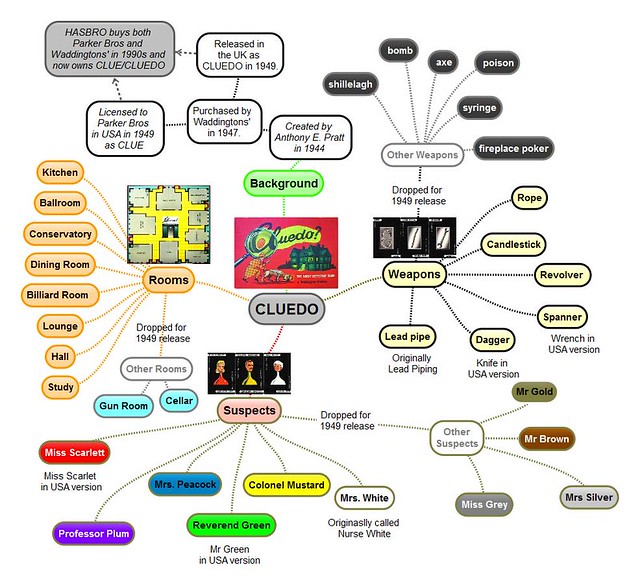
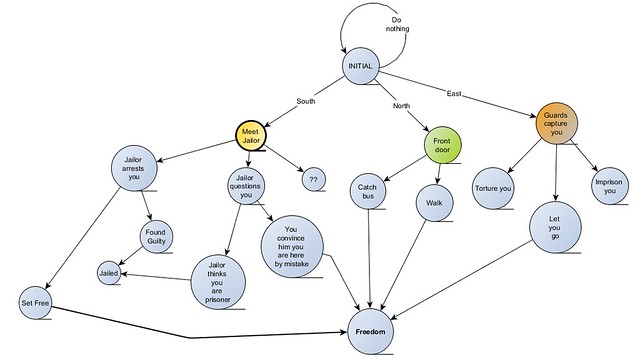

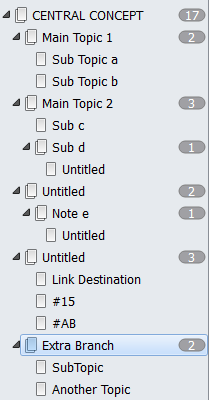
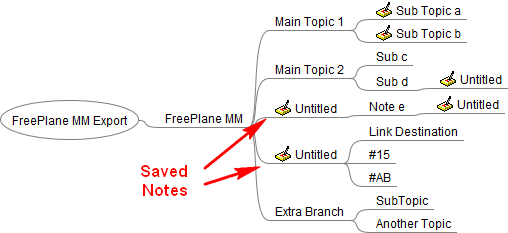
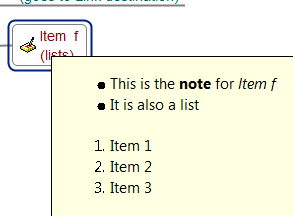
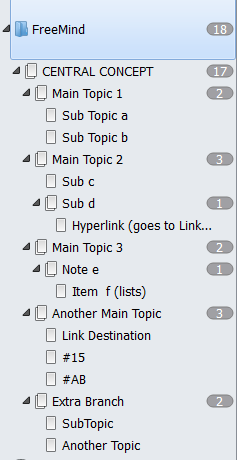
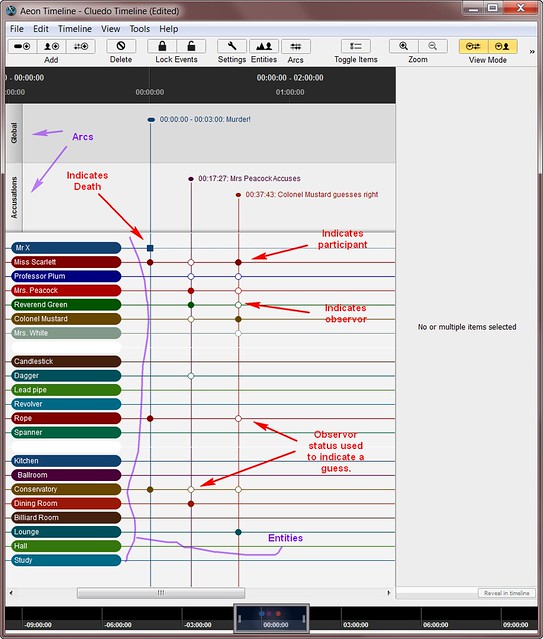
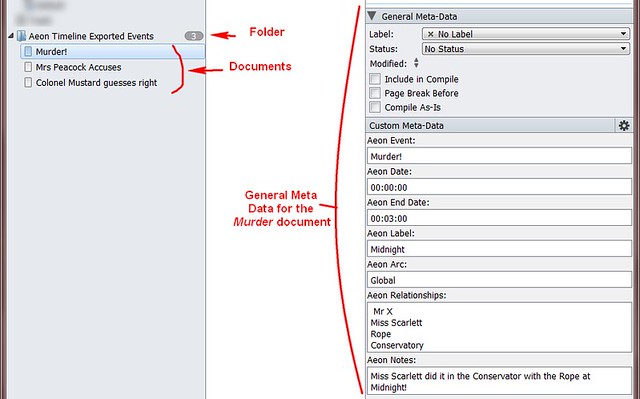
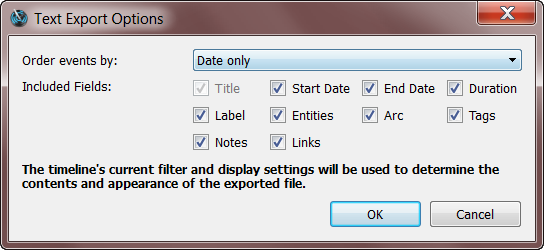

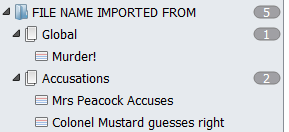


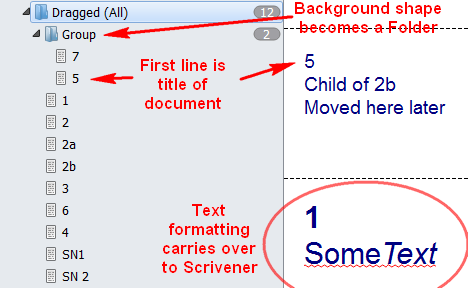


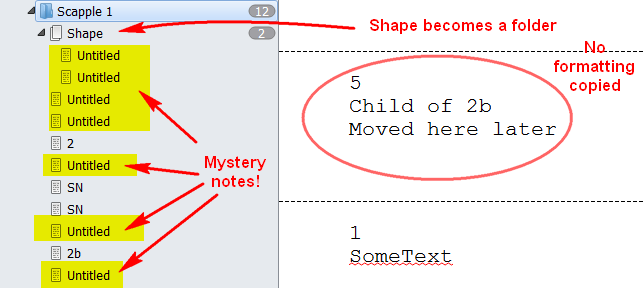
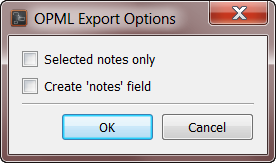
No comments:
Post a Comment